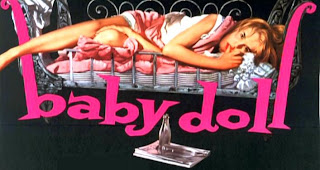FIVE CHARACTERS IN SEARCH OF AN EXIT
4 December 2008

4 December 2008
View this Twilight Zone show in three segments (1, 2, 3), then prepare the following questions for class discussion. The show was first broadcast on 22 December 1961, three days before Christmas. Try to guess the Christmas connection.
1. What does the clown say is in (arrived)?
2. What does the clown say should be done with the troops?
3. According to the clown, what comes quickly, even in the peacetime army?
4. What rank is the officer?
5. What does the officer call the clown for giving him a higher rank?
6. Who is called "an old sport"?
7. In the form of a question, what "important item" has "eluded" the soldier?
8. Where does the officer think the clown comes from?
9. Why does the clown say "It doesn't figure at all"?
10. What 3 "W" questions does the officer ask?
11. What does the ballet dancer say in reply?
12. What does the clown answer when the officer asks how long they will be where they are?
13. According to the clown, who knows the answer?
14. In one word, how does narrator Serling describe the nightmare?
15. Narrator Serling says "We will not end the nightmare." What does he say he'll do instead?
16. What kind of worker does the clown describe the officer as being?
17. What kind of psychologist does the officer describe the clown as being?
18. What three jobs does the clown say he might have?
19. According to the clown, in one word, what kind of "idiot" is the officer?
20. What does the officer say he wants?
21. What does the clown say they all want?
22. What four things does the clown suggest may be above them?
23. What four suggestions does the dancer give for their situation?
24. What does the hobo suggest?
25. What does the bagpiper suggest?
26. According to the clown, what is there an abundance of?
27. What possibility does the officer want examined?
28. What does the officer call their unreal situation?
29. Who brings them food and water?
30. Why does the officer feel it's natural not to feel hungry or thirsty?
31. What does the dancer say they all feel?
32. What does the major do with his shoe?
33. What three things does the officer hope to find in the wall?
34. According to the hobo, where is the universe?
35. What does the dancer think the noise is?
36. What does the officer scream to the people he believes are above them?
37. What does the dancer say about "the beginning"?
38. What does the hobo ask of the dancer to make the time pass?
39. What does the bagpiper offer to do for the dancer?
40. What has the officer never seen?
41. What does the major say is all he wants to do?
42. What does the clown call bright and incredibly inventive?
43. What does the dancer tell the major will happen after a while?
44. For whom does the dancer suggest dungeons are for?
45. Why does the officer say they must have names?
46. What does the major want to dig?
47. What seems apparent to the officer about where they are? (Incidentally, it seems he mispronounces the word "unequivocal" as "uneguivocable." There's no such adjective; there's an adverb, "unequivocably.")
48. According to the clown, how long has the officer been "trying"?
49. What is the dungeon made of?
50. What does the clown want them to pretend?
51. What does the clown call a figure of speech?
52. What does the clown admit they've forfeited?
53. What does the clown say they're all governed by?
54. What is one example of this the clown gives?
55. What sensation would the clown prefer to do without?
56. What does the dancer call a "chance"?
57. What does the bagpiper say about the group's plan?
58. What does the hobo say in response?
59. What does the clown say about exerting themselves?
60. What does the clown say was the case before the officer arrived?
61. What does the clown say about the majority?
62. What does the dancer ask about the top?
63. What does the officer say when the dancer says she can't reach the top because it's just a little above her?
64. What did the dancer think she did to her leg?
65. What proverb does the hobo quote when the officer tells the dancer she was almost to the top?
66. Where does the clown say they should go to find a rope?
67. How does the officer suggest they make a rope?
68. How many yards of "excellent material" does the clown offer?
69. The clown mentions "pagliaci." Google and discuss this well-known Italian word.
70. What does the officer say about none of them getting out?
71. What does the clown call the officer after he falls outside?
72. What is the dancer confident the officer will do?
73. What does the clown suggest the officer may have been right about?
74. What does a little girl find in the snow?
75. Where is she asked to drop it?
76. What are for the orphans?
77. How many do they have?
78. What does the woman ask the passersby to do with their hearts?
79. According to narrator Serling, what is wrought in the distorted image of human life?
80. What is in the arms of children?
81. What does Serling call the "odd stage"?
82. Discuss your responses to the drama each step of the way. For example, where did you think the people were in the beginning? But perhaps you developed other points of view as the show progressed. Discuss this. Finally, evaluate the show.

























